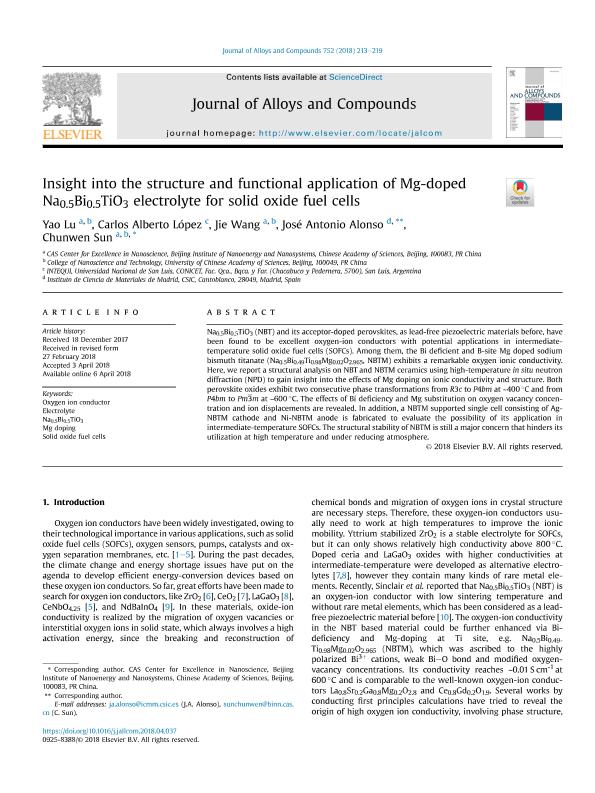Artículo
Insight into the structure and functional application of Mg-doped Na 0.5 Bi 0.5 TiO 3 electrolyte for solid oxide fuel cells
Fecha de publicación:
07/2018
Editorial:
Elsevier Science Sa
Revista:
Journal of Alloys and Compounds
ISSN:
0925-8388
Idioma:
Inglés
Tipo de recurso:
Artículo publicado
Clasificación temática:
Resumen
Na0.5Bi0.5TiO3 (NBT) and its acceptor-doped perovskites, as lead-free piezoelectric materials before, have been found to be excellent oxygen-ion conductors with potential applications in intermediate temperature solid oxide fuel cells (SOFCs). Among them, the Bi deficient and B-site Mg doped sodium bismuth titanate (Na0.5Bi0.49Ti0.98Mg0.02O2.965, NBTM) exhibits a remarkable oxygen ionic conductivity. Here, we report a structural analysis on NBT and NBTM ceramics using high-temperature in situ neutron diffraction (NPD) to gain insight into the effects of Mg doping on ionic conductivity and structure. Both perovskite oxides exhibit two consecutive phase transformations from R3c to P4bm at ~400 C and from P4bm to Pm3m at ~600 C. The effects of Bi deficiency and Mg substitution on oxygen vacancy concentration and ion displacements are revealed. In addition, a NBTM supported single cell consisting of Ag- NBTM cathode and Ni-NBTM anode is fabricated to evaluate the possibility of its application in intermediate-temperature SOFCs. The structural stability of NBTM is still a major concern that hinders its utilization at high temperature and under reducing atmosphere.
Archivos asociados
Licencia
Identificadores
Colecciones
Articulos(INTEQUI)
Articulos de INST. DE INVEST. EN TECNOLOGIA QUIMICA
Articulos de INST. DE INVEST. EN TECNOLOGIA QUIMICA
Citación
Lu, Yao; Lopez, Carlos Alberto; Wang, Jie; Alonso, José Antonio; Sun, Chunwen; Insight into the structure and functional application of Mg-doped Na 0.5 Bi 0.5 TiO 3 electrolyte for solid oxide fuel cells; Elsevier Science Sa; Journal of Alloys and Compounds; 752; 7-2018; 213-219
Compartir
Altmétricas




